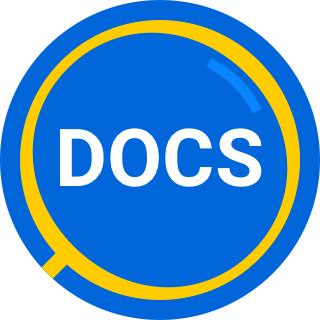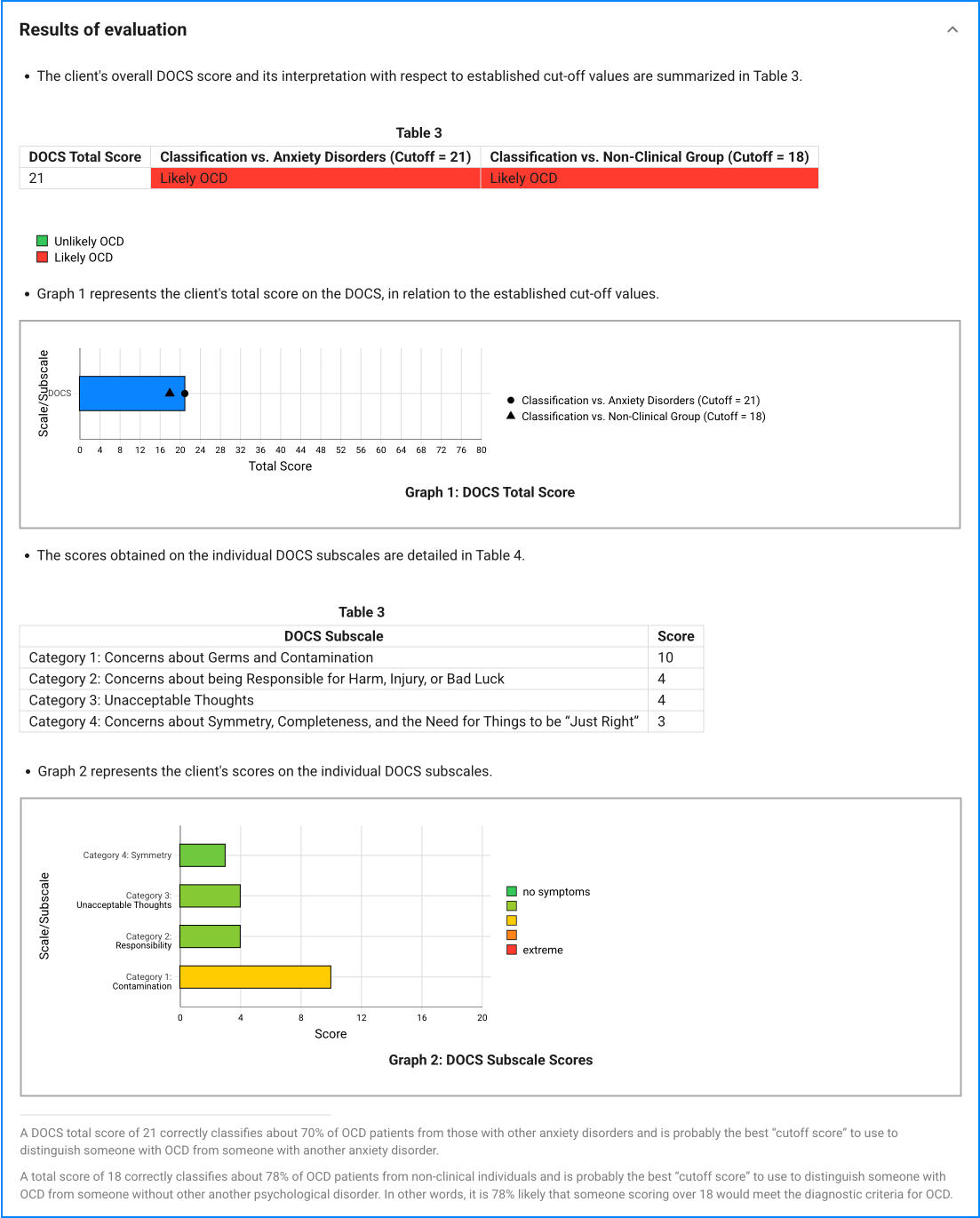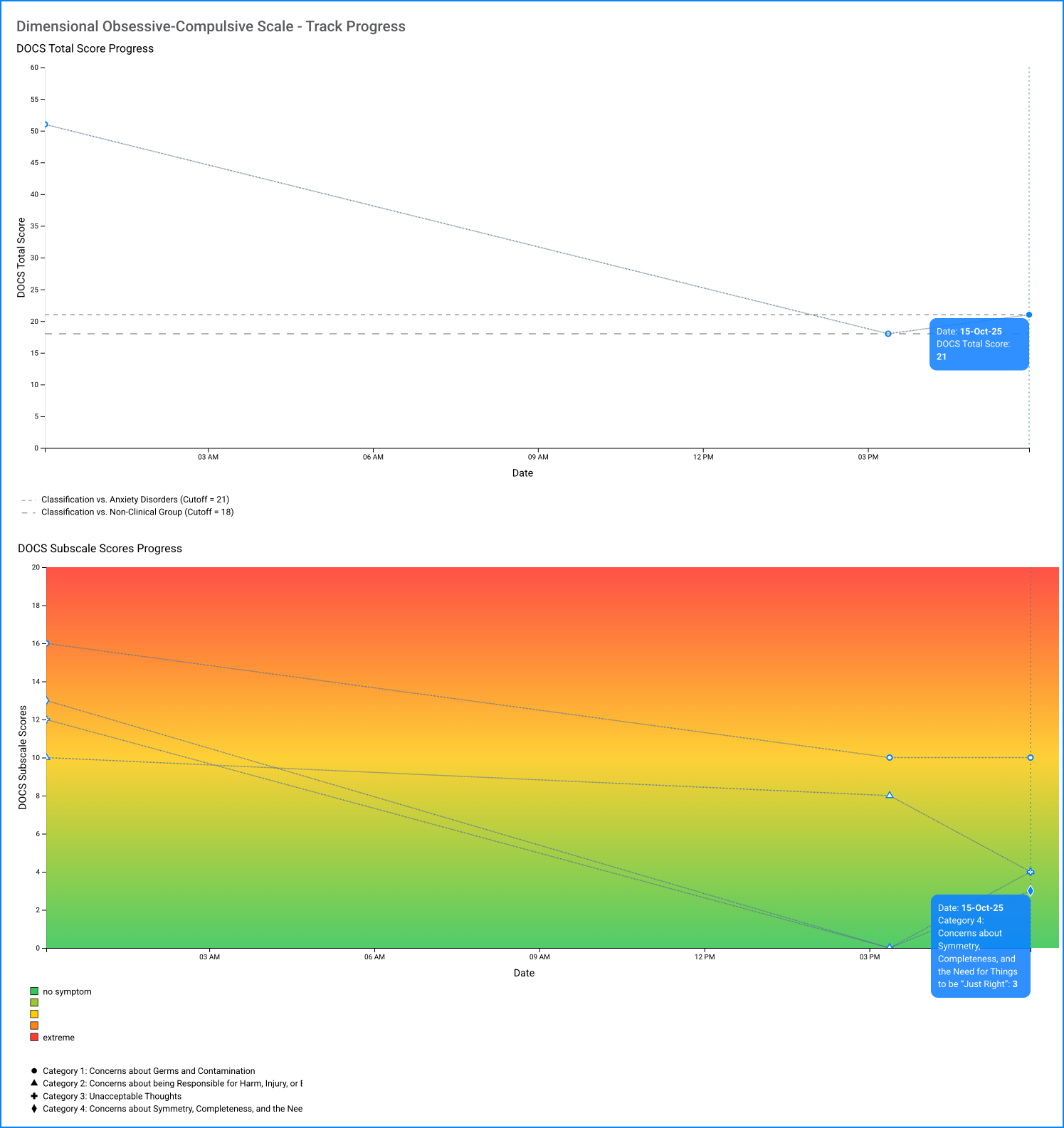The DOCS contains 4 subscales. Each subscale contains 5 items which are rated from 0 to 4. You can use the individual subscale scores (5 items) or the total score (all 20 items). The DOCS is scored by simply summing the scores of each item within each of the four subscales. The total score is the sum of all 20 items.
A DOCS total score of 21 correctly classifies about 70% of OCD patients from those with other anxiety disorders and is probably the best “cutoff score” to use to distinguish someone with OCD from someone with another anxiety disorder.
A total score of 18 correctly classifies about 78% of OCD patients from non-clinical individuals and is probably the best “cutoff score” to use to distinguish someone with OCD from someone without other another psychological disorder. In other words, it is 78% likely that someone scoring over 18 would meet the diagnostic criteria for OCD.




